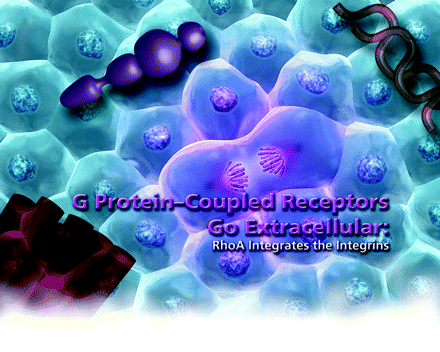G Protein-Coupled Receptors Go Extracellular: RhoA Integrates the Integrins
Abstract
The identification of downstream effectors of G protein–coupled receptors (GPCRs) is critical for understanding the interactions between signaling cascades and for developing new pharmacological approaches for controlling GPCR-mediated responses. RhoA is a small G protein that serves as a proximal downstream effector of numerous GPCRs and regulates a variety of basic cell functions, including migration, survival, and proliferation. Intriguingly, GPCR ligands such as thrombin, sphingosine-1-phosphate, and lysophosphatidic acid, which signal through G12/13 and activate RhoA, have recently been shown to induce the expression of the extracellular matrix protein Cyr61 (i.e., CCN1). Cyr61 is secreted and interacts with cell surface integrins to activate kinase and transcriptional cascades that are also known to contribute to cell migration, survival, and proliferation. The GPCR/RhoA/Cyr61/integrin pathway defines a novel convergence mechanism for integrating GPCR-and integrin-dependent signaling cascades that may contribute to sustained and pathophysiological responses to GPCR activation.

- © American Society for Pharmacology and Experimental Theraputics 2008



